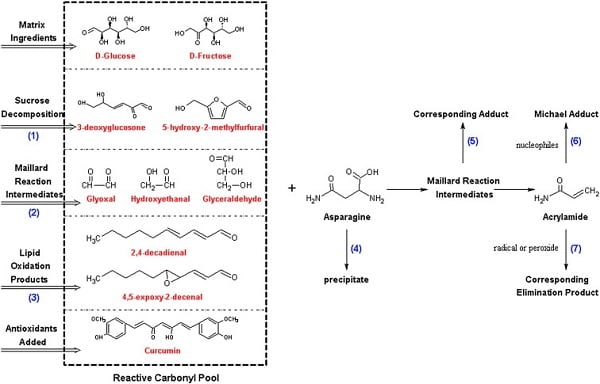While current strategies to reduce the levels of acrylamide in foods are working well, there must be a greater focus on understanding the structure of reactive functional groups and greater exploration of possible concentration-activity relationships in order to further reduce levels of the potentially damaging compound using antioxidants, said the team of Chinese researchers behind a new review.
Writing in Food Research International, Ying Zhang and his colleagues from Zhejiang University noted that recent years have seen 'significant improvements' in knowledge on acrylamide, including its formation mechanism and mitigation strategies - with several research groups investigating the effect of various antioxidants and antioxidative extracts on acrylamide formation.
"However, there are confusing results in the literature, where some studies claim mitigation while others no effect or even an increase," they said - commenting that such findings could be attributed to "the ability of antioxidants with different structures or functional groups to react with acrylamide precursors, with intermediates of the reaction or with acrylamide itself, leading to either reducing or promoting effects."
Despite this potential, the team suggests that out of all the possible parameters affecting the level of acrylamide in foods, the effect of antioxidants "has not yet been elucidated satisfactorily."
"As a wide range of substances, the relationship between antioxidants and acrylamide formation deserves, however to be discussed," they said.
Antioxidant potential
As part of their review, Zhang and his colleagues produced a graphical illustration that summarises the possible pathways involved in the generation of acrylamide and includes potential antioxidants that may be utilised at various stages.

See the full study for an full explanation of this figure.
Further research
Zhang and his team also noted that antioxidants can prevent lipid oxidation, which would limit carbonyl accumulation, by its antioxidant capacity.
“But since the antioxidant capacity measured may be dramatically influenced by melanoidins generated during the Maillard reaction, it might not be an adequate assay to evaluate the antioxidant's ability to influence acrylamide formation.”
They suggested that more research is needed to focus on:
- finding other reactive structure patterns or functional groups in acrylamide formation and reduction,
- ensuring the mechanism of acrylamide elimination,
- exploring the possible mechanism of concentration–activity relationship,
- the foundation and optimisation of standard reacting systems to compare results among laboratories.
Source: Food Research International
Volume 51, Issue 2, Pages 611–620, doi: 10.1016/j.foodres.2012.12.047
"Relationship between antioxidants and acrylamide formation: A review"
Authors: Cheng Jin, Xiaoqin Wu, Ying Zhang
